-
EXECUTIVE SUMMARY
-
Market Overview
-
Key Findings
-
Market Segmentation
-
Competitive Landscape
-
Challenges and Opportunities
-
Future Outlook
-
\r\n
-
MARKET INTRODUCTION
-
Definition
-
Scope of the study
- Research Objective
- Assumption
- Limitations
-
RESEARCH METHODOLOGY
-
Overview
-
Data Mining
-
Secondary Research
-
Primary Research
- Primary Interviews and Information Gathering Process
- Breakdown of Primary Respondents
-
Forecasting Model
-
Market Size Estimation
- Bottom-Up Approach
- Top-Down Approach
-
Data Triangulation
-
Validation
-
\r\n
-
MARKET DYNAMICS
-
Overview
-
Drivers
-
Restraints
-
Opportunities
-
MARKET FACTOR ANALYSIS
-
Value chain Analysis
-
Porter's Five Forces Analysis
- Bargaining Power of Suppliers
- Bargaining Power of Buyers
- Threat of New Entrants
- Threat of Substitutes
- Intensity of Rivalry
-
COVID-19 Impact Analysis
- Market Impact Analysis
- Regional Impact
- Opportunity and Threat Analysis
-
\r\n
-
AUTOMOTIVE REAR VIEW MIRROR MARKET, BY TYPE (USD BILLION)
-
Traditional Mirrors
-
Digital Mirrors
-
Smart Mirrors
-
AUTOMOTIVE REAR VIEW MIRROR MARKET, BY MOUNTING TYPE (USD BILLION)
-
Interior Mounting
-
Exterior Mounting
-
AUTOMOTIVE REAR VIEW MIRROR MARKET, BY FUNCTIONALITY (USD BILLION)
-
Manual Adjustment
-
Electrochromatic
-
Heated Mirrors
-
Auto-Dimming
-
Integrated Technology
-
AUTOMOTIVE REAR VIEW MIRROR MARKET, BY APPLICATION (USD BILLION)
-
Passenger Vehicles
-
Commercial Vehicles
-
Two-Wheelers
-
AUTOMOTIVE REAR VIEW MIRROR MARKET, BY REGIONAL (USD BILLION)
-
North America
- US
- Canada
-
Europe
- Germany
- UK
- France
- Russia
- Italy
- Spain
- Rest of Europe
-
APAC
- China
- India
- Japan
- South Korea
- Malaysia
- Thailand
- Indonesia
- Rest of APAC
-
South America
- Brazil
- Mexico
- Argentina
- Rest of South America
-
MEA
- GCC Countries
- South Africa
- Rest of MEA
-
\r\n
-
COMPETITIVE LANDSCAPE
-
Overview
-
Competitive Analysis
-
Market share Analysis
-
Major Growth Strategy in the Automotive Rear View Mirror Market
-
Competitive Benchmarking
-
Leading Players in Terms of Number of Developments in the Automotive Rear View Mirror Market
-
Key developments and growth strategies
- New Product Launch/Service Deployment
- Merger & Acquisitions
- Joint Ventures
-
Major Players Financial Matrix
- Sales and Operating Income
- Major Players R&D Expenditure. 2023
-
COMPANY PROFILES
-
Daiichi Jitsugyo
- Financial Overview
- Products Offered
- Key Developments
- SWOT Analysis
- Key Strategies
-
Continental
- Financial Overview
- Products Offered
- Key Developments
- SWOT Analysis
- Key Strategies
-
Seoho
- Financial Overview
- Products Offered
- Key Developments
- SWOT Analysis
- Key Strategies
-
Samvardhana Motherson Group
- Financial Overview
- Products Offered
- Key Developments
- SWOT Analysis
- Key Strategies
-
Changchun ITRI
- Financial Overview
- Products Offered
- Key Developments
- SWOT Analysis
- Key Strategies
-
Gentex
- Financial Overview
- Products Offered
- Key Developments
- SWOT Analysis
- Key Strategies
-
Aisin Seiki
- Financial Overview
- Products Offered
- Key Developments
- SWOT Analysis
- Key Strategies
-
Mitsuba
- Financial Overview
- Products Offered
- Key Developments
- SWOT Analysis
- Key Strategies
-
Denso
- Financial Overview
- Products Offered
- Key Developments
- SWOT Analysis
- Key Strategies
-
Valeo
- Financial Overview
- Products Offered
- Key Developments
- SWOT Analysis
- Key Strategies
-
Ficosa
- Financial Overview
- Products Offered
- Key Developments
- SWOT Analysis
- Key Strategies
-
Bosch
- Financial Overview
- Products Offered
- Key Developments
- SWOT Analysis
- Key Strategies
-
Mobius
- Financial Overview
- Products Offered
- Key Developments
- SWOT Analysis
- Key Strategies
-
Magna International
- Financial Overview
- Products Offered
- Key Developments
- SWOT Analysis
- Key Strategies
-
APPENDIX
-
References
-
Related Reports
-
LIST OF TABLES
-
\r\n
-
LIST OF ASSUMPTIONS
-
NORTH AMERICA AUTOMOTIVE REAR VIEW MIRROR MARKET SIZE ESTIMATES & FORECAST, BY TYPE, 2019-2035 (USD BILLIONS)
-
NORTH AMERICA AUTOMOTIVE REAR VIEW MIRROR MARKET SIZE ESTIMATES & FORECAST, BY MOUNTING TYPE, 2019-2035 (USD BILLIONS)
-
NORTH AMERICA AUTOMOTIVE REAR VIEW MIRROR MARKET SIZE ESTIMATES & FORECAST, BY FUNCTIONALITY, 2019-2035 (USD BILLIONS)
-
NORTH AMERICA AUTOMOTIVE REAR VIEW MIRROR MARKET SIZE ESTIMATES & FORECAST, BY APPLICATION, 2019-2035 (USD BILLIONS)
-
NORTH AMERICA AUTOMOTIVE REAR VIEW MIRROR MARKET SIZE ESTIMATES & FORECAST, BY REGIONAL, 2019-2035 (USD BILLIONS)
-
US AUTOMOTIVE REAR VIEW MIRROR MARKET SIZE ESTIMATES & FORECAST, BY TYPE, 2019-2035 (USD BILLIONS)
-
US AUTOMOTIVE REAR VIEW MIRROR MARKET SIZE ESTIMATES & FORECAST, BY MOUNTING TYPE, 2019-2035 (USD BILLIONS)
-
US AUTOMOTIVE REAR VIEW MIRROR MARKET SIZE ESTIMATES & FORECAST, BY FUNCTIONALITY, 2019-2035 (USD BILLIONS)
-
US AUTOMOTIVE REAR VIEW MIRROR MARKET SIZE ESTIMATES & FORECAST, BY APPLICATION, 2019-2035 (USD BILLIONS)
-
US AUTOMOTIVE REAR VIEW MIRROR MARKET SIZE ESTIMATES & FORECAST, BY REGIONAL, 2019-2035 (USD BILLIONS)
-
CANADA AUTOMOTIVE REAR VIEW MIRROR MARKET SIZE ESTIMATES & FORECAST, BY TYPE, 2019-2035 (USD BILLIONS)
-
CANADA AUTOMOTIVE REAR VIEW MIRROR MARKET SIZE ESTIMATES & FORECAST, BY MOUNTING TYPE, 2019-2035 (USD BILLIONS)
-
CANADA AUTOMOTIVE REAR VIEW MIRROR MARKET SIZE ESTIMATES & FORECAST, BY FUNCTIONALITY, 2019-2035 (USD BILLIONS)
-
CANADA AUTOMOTIVE REAR VIEW MIRROR MARKET SIZE ESTIMATES & FORECAST, BY APPLICATION, 2019-2035 (USD BILLIONS)
-
CANADA AUTOMOTIVE REAR VIEW MIRROR MARKET SIZE ESTIMATES & FORECAST, BY REGIONAL, 2019-2035 (USD BILLIONS)
-
EUROPE AUTOMOTIVE REAR VIEW MIRROR MARKET SIZE ESTIMATES & FORECAST, BY TYPE, 2019-2035 (USD BILLIONS)
-
EUROPE AUTOMOTIVE REAR VIEW MIRROR MARKET SIZE ESTIMATES & FORECAST, BY MOUNTING TYPE, 2019-2035 (USD BILLIONS)
-
EUROPE AUTOMOTIVE REAR VIEW MIRROR MARKET SIZE ESTIMATES & FORECAST, BY FUNCTIONALITY, 2019-2035 (USD BILLIONS)
-
EUROPE AUTOMOTIVE REAR VIEW MIRROR MARKET SIZE ESTIMATES & FORECAST, BY APPLICATION, 2019-2035 (USD BILLIONS)
-
EUROPE AUTOMOTIVE REAR VIEW MIRROR MARKET SIZE ESTIMATES & FORECAST, BY REGIONAL, 2019-2035 (USD BILLIONS)
-
GERMANY AUTOMOTIVE REAR VIEW MIRROR MARKET SIZE ESTIMATES & FORECAST, BY TYPE, 2019-2035 (USD BILLIONS)
-
GERMANY AUTOMOTIVE REAR VIEW MIRROR MARKET SIZE ESTIMATES & FORECAST, BY MOUNTING TYPE, 2019-2035 (USD BILLIONS)
-
GERMANY AUTOMOTIVE REAR VIEW MIRROR MARKET SIZE ESTIMATES & FORECAST, BY FUNCTIONALITY, 2019-2035 (USD BILLIONS)
-
GERMANY AUTOMOTIVE REAR VIEW MIRROR MARKET SIZE ESTIMATES & FORECAST, BY APPLICATION, 2019-2035 (USD BILLIONS)
-
GERMANY AUTOMOTIVE REAR VIEW MIRROR MARKET SIZE ESTIMATES & FORECAST, BY REGIONAL, 2019-2035 (USD BILLIONS)
-
UK AUTOMOTIVE REAR VIEW MIRROR MARKET SIZE ESTIMATES & FORECAST, BY TYPE, 2019-2035 (USD BILLIONS)
-
UK AUTOMOTIVE REAR VIEW MIRROR MARKET SIZE ESTIMATES & FORECAST, BY MOUNTING TYPE, 2019-2035 (USD BILLIONS)
-
UK AUTOMOTIVE REAR VIEW MIRROR MARKET SIZE ESTIMATES & FORECAST, BY FUNCTIONALITY, 2019-2035 (USD BILLIONS)
-
UK AUTOMOTIVE REAR VIEW MIRROR MARKET SIZE ESTIMATES & FORECAST, BY APPLICATION, 2019-2035 (USD BILLIONS)
-
UK AUTOMOTIVE REAR VIEW MIRROR MARKET SIZE ESTIMATES & FORECAST, BY REGIONAL, 2019-2035 (USD BILLIONS)
-
FRANCE AUTOMOTIVE REAR VIEW MIRROR MARKET SIZE ESTIMATES & FORECAST, BY TYPE, 2019-2035 (USD BILLIONS)
-
FRANCE AUTOMOTIVE REAR VIEW MIRROR MARKET SIZE ESTIMATES & FORECAST, BY MOUNTING TYPE, 2019-2035 (USD BILLIONS)
-
FRANCE AUTOMOTIVE REAR VIEW MIRROR MARKET SIZE ESTIMATES & FORECAST, BY FUNCTIONALITY, 2019-2035 (USD BILLIONS)
-
FRANCE AUTOMOTIVE REAR VIEW MIRROR MARKET SIZE ESTIMATES & FORECAST, BY APPLICATION, 2019-2035 (USD BILLIONS)
-
FRANCE AUTOMOTIVE REAR VIEW MIRROR MARKET SIZE ESTIMATES & FORECAST, BY REGIONAL, 2019-2035 (USD BILLIONS)
-
RUSSIA AUTOMOTIVE REAR VIEW MIRROR MARKET SIZE ESTIMATES & FORECAST, BY TYPE, 2019-2035 (USD BILLIONS)
-
RUSSIA AUTOMOTIVE REAR VIEW MIRROR MARKET SIZE ESTIMATES & FORECAST, BY MOUNTING TYPE, 2019-2035 (USD BILLIONS)
-
RUSSIA AUTOMOTIVE REAR VIEW MIRROR MARKET SIZE ESTIMATES & FORECAST, BY FUNCTIONALITY, 2019-2035 (USD BILLIONS)
-
RUSSIA AUTOMOTIVE REAR VIEW MIRROR MARKET SIZE ESTIMATES & FORECAST, BY APPLICATION, 2019-2035 (USD BILLIONS)
-
RUSSIA AUTOMOTIVE REAR VIEW MIRROR MARKET SIZE ESTIMATES & FORECAST, BY REGIONAL, 2019-2035 (USD BILLIONS)
-
ITALY AUTOMOTIVE REAR VIEW MIRROR MARKET SIZE ESTIMATES & FORECAST, BY TYPE, 2019-2035 (USD BILLIONS)
-
ITALY AUTOMOTIVE REAR VIEW MIRROR MARKET SIZE ESTIMATES & FORECAST, BY MOUNTING TYPE, 2019-2035 (USD BILLIONS)
-
ITALY AUTOMOTIVE REAR VIEW MIRROR MARKET SIZE ESTIMATES & FORECAST, BY FUNCTIONALITY, 2019-2035 (USD BILLIONS)
-
ITALY AUTOMOTIVE REAR VIEW MIRROR MARKET SIZE ESTIMATES & FORECAST, BY APPLICATION, 2019-2035 (USD BILLIONS)
-
ITALY AUTOMOTIVE REAR VIEW MIRROR MARKET SIZE ESTIMATES & FORECAST, BY REGIONAL, 2019-2035 (USD BILLIONS)
-
SPAIN AUTOMOTIVE REAR VIEW MIRROR MARKET SIZE ESTIMATES & FORECAST, BY TYPE, 2019-2035 (USD BILLIONS)
-
SPAIN AUTOMOTIVE REAR VIEW MIRROR MARKET SIZE ESTIMATES & FORECAST, BY MOUNTING TYPE, 2019-2035 (USD BILLIONS)
-
SPAIN AUTOMOTIVE REAR VIEW MIRROR MARKET SIZE ESTIMATES & FORECAST, BY FUNCTIONALITY, 2019-2035 (USD BILLIONS)
-
SPAIN AUTOMOTIVE REAR VIEW MIRROR MARKET SIZE ESTIMATES & FORECAST, BY APPLICATION, 2019-2035 (USD BILLIONS)
-
SPAIN AUTOMOTIVE REAR VIEW MIRROR MARKET SIZE ESTIMATES & FORECAST, BY REGIONAL, 2019-2035 (USD BILLIONS)
-
REST OF EUROPE AUTOMOTIVE REAR VIEW MIRROR MARKET SIZE ESTIMATES & FORECAST, BY TYPE, 2019-2035 (USD BILLIONS)
-
REST OF EUROPE AUTOMOTIVE REAR VIEW MIRROR MARKET SIZE ESTIMATES & FORECAST, BY MOUNTING TYPE, 2019-2035 (USD BILLIONS)
-
REST OF EUROPE AUTOMOTIVE REAR VIEW MIRROR MARKET SIZE ESTIMATES & FORECAST, BY FUNCTIONALITY, 2019-2035 (USD BILLIONS)
-
REST OF EUROPE AUTOMOTIVE REAR VIEW MIRROR MARKET SIZE ESTIMATES & FORECAST, BY APPLICATION, 2019-2035 (USD BILLIONS)
-
REST OF EUROPE AUTOMOTIVE REAR VIEW MIRROR MARKET SIZE ESTIMATES & FORECAST, BY REGIONAL, 2019-2035 (USD BILLIONS)
-
APAC AUTOMOTIVE REAR VIEW MIRROR MARKET SIZE ESTIMATES & FORECAST, BY TYPE, 2019-2035 (USD BILLIONS)
-
APAC AUTOMOTIVE REAR VIEW MIRROR MARKET SIZE ESTIMATES & FORECAST, BY MOUNTING TYPE, 2019-2035 (USD BILLIONS)
-
APAC AUTOMOTIVE REAR VIEW MIRROR MARKET SIZE ESTIMATES & FORECAST, BY FUNCTIONALITY, 2019-2035 (USD BILLIONS)
-
APAC AUTOMOTIVE REAR VIEW MIRROR MARKET SIZE ESTIMATES & FORECAST, BY APPLICATION, 2019-2035 (USD BILLIONS)
-
APAC AUTOMOTIVE REAR VIEW MIRROR MARKET SIZE ESTIMATES & FORECAST, BY REGIONAL, 2019-2035 (USD BILLIONS)
-
CHINA AUTOMOTIVE REAR VIEW MIRROR MARKET SIZE ESTIMATES & FORECAST, BY TYPE, 2019-2035 (USD BILLIONS)
-
CHINA AUTOMOTIVE REAR VIEW MIRROR MARKET SIZE ESTIMATES & FORECAST, BY MOUNTING TYPE, 2019-2035 (USD BILLIONS)
-
CHINA AUTOMOTIVE REAR VIEW MIRROR MARKET SIZE ESTIMATES & FORECAST, BY FUNCTIONALITY, 2019-2035 (USD BILLIONS)
-
CHINA AUTOMOTIVE REAR VIEW MIRROR MARKET SIZE ESTIMATES & FORECAST, BY APPLICATION, 2019-2035 (USD BILLIONS)
-
CHINA AUTOMOTIVE REAR VIEW MIRROR MARKET SIZE ESTIMATES & FORECAST, BY REGIONAL, 2019-2035 (USD BILLIONS)
-
INDIA AUTOMOTIVE REAR VIEW MIRROR MARKET SIZE ESTIMATES & FORECAST, BY TYPE, 2019-2035 (USD BILLIONS)
-
INDIA AUTOMOTIVE REAR VIEW MIRROR MARKET SIZE ESTIMATES & FORECAST, BY MOUNTING TYPE, 2019-2035 (USD BILLIONS)
-
INDIA AUTOMOTIVE REAR VIEW MIRROR MARKET SIZE ESTIMATES & FORECAST, BY FUNCTIONALITY, 2019-2035 (USD BILLIONS)
-
INDIA AUTOMOTIVE REAR VIEW MIRROR MARKET SIZE ESTIMATES & FORECAST, BY APPLICATION, 2019-2035 (USD BILLIONS)
-
INDIA AUTOMOTIVE REAR VIEW MIRROR MARKET SIZE ESTIMATES & FORECAST, BY REGIONAL, 2019-2035 (USD BILLIONS)
-
JAPAN AUTOMOTIVE REAR VIEW MIRROR MARKET SIZE ESTIMATES & FORECAST, BY TYPE, 2019-2035 (USD BILLIONS)
-
JAPAN AUTOMOTIVE REAR VIEW MIRROR MARKET SIZE ESTIMATES & FORECAST, BY MOUNTING TYPE, 2019-2035 (USD BILLIONS)
-
JAPAN AUTOMOTIVE REAR VIEW MIRROR MARKET SIZE ESTIMATES & FORECAST, BY FUNCTIONALITY, 2019-2035 (USD BILLIONS)
-
JAPAN AUTOMOTIVE REAR VIEW MIRROR MARKET SIZE ESTIMATES & FORECAST, BY APPLICATION, 2019-2035 (USD BILLIONS)
-
JAPAN AUTOMOTIVE REAR VIEW MIRROR MARKET SIZE ESTIMATES & FORECAST, BY REGIONAL, 2019-2035 (USD BILLIONS)
-
SOUTH KOREA AUTOMOTIVE REAR VIEW MIRROR MARKET SIZE ESTIMATES & FORECAST, BY TYPE, 2019-2035 (USD BILLIONS)
-
SOUTH KOREA AUTOMOTIVE REAR VIEW MIRROR MARKET SIZE ESTIMATES & FORECAST, BY MOUNTING TYPE, 2019-2035 (USD BILLIONS)
-
SOUTH KOREA AUTOMOTIVE REAR VIEW MIRROR MARKET SIZE ESTIMATES & FORECAST, BY FUNCTIONALITY, 2019-2035 (USD BILLIONS)
-
SOUTH KOREA AUTOMOTIVE REAR VIEW MIRROR MARKET SIZE ESTIMATES & FORECAST, BY APPLICATION, 2019-2035 (USD BILLIONS)
-
SOUTH KOREA AUTOMOTIVE REAR VIEW MIRROR MARKET SIZE ESTIMATES & FORECAST, BY REGIONAL, 2019-2035 (USD BILLIONS)
-
MALAYSIA AUTOMOTIVE REAR VIEW MIRROR MARKET SIZE ESTIMATES & FORECAST, BY TYPE, 2019-2035 (USD BILLIONS)
-
MALAYSIA AUTOMOTIVE REAR VIEW MIRROR MARKET SIZE ESTIMATES & FORECAST, BY MOUNTING TYPE, 2019-2035 (USD BILLIONS)
-
MALAYSIA AUTOMOTIVE REAR VIEW MIRROR MARKET SIZE ESTIMATES & FORECAST, BY FUNCTIONALITY, 2019-2035 (USD BILLIONS)
-
MALAYSIA AUTOMOTIVE REAR VIEW MIRROR MARKET SIZE ESTIMATES & FORECAST, BY APPLICATION, 2019-2035 (USD BILLIONS)
-
MALAYSIA AUTOMOTIVE REAR VIEW MIRROR MARKET SIZE ESTIMATES & FORECAST, BY REGIONAL, 2019-2035 (USD BILLIONS)
-
THAILAND AUTOMOTIVE REAR VIEW MIRROR MARKET SIZE ESTIMATES & FORECAST, BY TYPE, 2019-2035 (USD BILLIONS)
-
THAILAND AUTOMOTIVE REAR VIEW MIRROR MARKET SIZE ESTIMATES & FORECAST, BY MOUNTING TYPE, 2019-2035 (USD BILLIONS)
-
THAILAND AUTOMOTIVE REAR VIEW MIRROR MARKET SIZE ESTIMATES & FORECAST, BY FUNCTIONALITY, 2019-2035 (USD BILLIONS)
-
THAILAND AUTOMOTIVE REAR VIEW MIRROR MARKET SIZE ESTIMATES & FORECAST, BY APPLICATION, 2019-2035 (USD BILLIONS)
-
THAILAND AUTOMOTIVE REAR VIEW MIRROR MARKET SIZE ESTIMATES & FORECAST, BY REGIONAL, 2019-2035 (USD BILLIONS)
-
INDONESIA AUTOMOTIVE REAR VIEW MIRROR MARKET SIZE ESTIMATES & FORECAST, BY TYPE, 2019-2035 (USD BILLIONS)
-
INDONESIA AUTOMOTIVE REAR VIEW MIRROR MARKET SIZE ESTIMATES & FORECAST, BY MOUNTING TYPE, 2019-2035 (USD BILLIONS)
-
INDONESIA AUTOMOTIVE REAR VIEW MIRROR MARKET SIZE ESTIMATES & FORECAST, BY FUNCTIONALITY, 2019-2035 (USD BILLIONS)
-
INDONESIA AUTOMOTIVE REAR VIEW MIRROR MARKET SIZE ESTIMATES & FORECAST, BY APPLICATION, 2019-2035 (USD BILLIONS)
-
INDONESIA AUTOMOTIVE REAR VIEW MIRROR MARKET SIZE ESTIMATES & FORECAST, BY REGIONAL, 2019-2035 (USD BILLIONS)
-
REST OF APAC AUTOMOTIVE REAR VIEW MIRROR MARKET SIZE ESTIMATES & FORECAST, BY TYPE, 2019-2035 (USD BILLIONS)
-
REST OF APAC AUTOMOTIVE REAR VIEW MIRROR MARKET SIZE ESTIMATES & FORECAST, BY MOUNTING TYPE, 2019-2035 (USD BILLIONS)
-
REST OF APAC AUTOMOTIVE REAR VIEW MIRROR MARKET SIZE ESTIMATES & FORECAST, BY FUNCTIONALITY, 2019-2035 (USD BILLIONS)
-
REST OF APAC AUTOMOTIVE REAR VIEW MIRROR MARKET SIZE ESTIMATES & FORECAST, BY APPLICATION, 2019-2035 (USD BILLIONS)
-
REST OF APAC AUTOMOTIVE REAR VIEW MIRROR MARKET SIZE ESTIMATES & FORECAST, BY REGIONAL, 2019-2035 (USD BILLIONS)
-
SOUTH AMERICA AUTOMOTIVE REAR VIEW MIRROR MARKET SIZE ESTIMATES & FORECAST, BY TYPE, 2019-2035 (USD BILLIONS)
-
SOUTH AMERICA AUTOMOTIVE REAR VIEW MIRROR MARKET SIZE ESTIMATES & FORECAST, BY MOUNTING TYPE, 2019-2035 (USD BILLIONS)
-
SOUTH AMERICA AUTOMOTIVE REAR VIEW MIRROR MARKET SIZE ESTIMATES & FORECAST, BY FUNCTIONALITY, 2019-2035 (USD BILLIONS)
-
SOUTH AMERICA AUTOMOTIVE REAR VIEW MIRROR MARKET SIZE ESTIMATES & FORECAST, BY APPLICATION, 2019-2035 (USD BILLIONS)
-
SOUTH AMERICA AUTOMOTIVE REAR VIEW MIRROR MARKET SIZE ESTIMATES & FORECAST, BY REGIONAL, 2019-2035 (USD BILLIONS)
-
BRAZIL AUTOMOTIVE REAR VIEW MIRROR MARKET SIZE ESTIMATES & FORECAST, BY TYPE, 2019-2035 (USD BILLIONS)
-
BRAZIL AUTOMOTIVE REAR VIEW MIRROR MARKET SIZE ESTIMATES & FORECAST, BY MOUNTING TYPE, 2019-2035 (USD BILLIONS)
-
BRAZIL AUTOMOTIVE REAR VIEW MIRROR MARKET SIZE ESTIMATES & FORECAST, BY FUNCTIONALITY, 2019-2035 (USD BILLIONS)
-
BRAZIL AUTOMOTIVE REAR VIEW MIRROR MARKET SIZE ESTIMATES & FORECAST, BY APPLICATION, 2019-2035 (USD BILLIONS)
-
BRAZIL AUTOMOTIVE REAR VIEW MIRROR MARKET SIZE ESTIMATES & FORECAST, BY REGIONAL, 2019-2035 (USD BILLIONS)
-
MEXICO AUTOMOTIVE REAR VIEW MIRROR MARKET SIZE ESTIMATES & FORECAST, BY TYPE, 2019-2035 (USD BILLIONS)
-
MEXICO AUTOMOTIVE REAR VIEW MIRROR MARKET SIZE ESTIMATES & FORECAST, BY MOUNTING TYPE, 2019-2035 (USD BILLIONS)
-
MEXICO AUTOMOTIVE REAR VIEW MIRROR MARKET SIZE ESTIMATES & FORECAST, BY FUNCTIONALITY, 2019-2035 (USD BILLIONS)
-
MEXICO AUTOMOTIVE REAR VIEW MIRROR MARKET SIZE ESTIMATES & FORECAST, BY APPLICATION, 2019-2035 (USD BILLIONS)
-
MEXICO AUTOMOTIVE REAR VIEW MIRROR MARKET SIZE ESTIMATES & FORECAST, BY REGIONAL, 2019-2035 (USD BILLIONS)
-
ARGENTINA AUTOMOTIVE REAR VIEW MIRROR MARKET SIZE ESTIMATES & FORECAST, BY TYPE, 2019-2035 (USD BILLIONS)
-
ARGENTINA AUTOMOTIVE REAR VIEW MIRROR MARKET SIZE ESTIMATES & FORECAST, BY MOUNTING TYPE, 2019-2035 (USD BILLIONS)
-
ARGENTINA AUTOMOTIVE REAR VIEW MIRROR MARKET SIZE ESTIMATES & FORECAST, BY FUNCTIONALITY, 2019-2035 (USD BILLIONS)
-
ARGENTINA AUTOMOTIVE REAR VIEW MIRROR MARKET SIZE ESTIMATES & FORECAST, BY APPLICATION, 2019-2035 (USD BILLIONS)
-
ARGENTINA AUTOMOTIVE REAR VIEW MIRROR MARKET SIZE ESTIMATES & FORECAST, BY REGIONAL, 2019-2035 (USD BILLIONS)
-
REST OF SOUTH AMERICA AUTOMOTIVE REAR VIEW MIRROR MARKET SIZE ESTIMATES & FORECAST, BY TYPE, 2019-2035 (USD BILLIONS)
-
REST OF SOUTH AMERICA AUTOMOTIVE REAR VIEW MIRROR MARKET SIZE ESTIMATES & FORECAST, BY MOUNTING TYPE, 2019-2035 (USD BILLIONS)
-
REST OF SOUTH AMERICA AUTOMOTIVE REAR VIEW MIRROR MARKET SIZE ESTIMATES & FORECAST, BY FUNCTIONALITY, 2019-2035 (USD BILLIONS)
-
REST OF SOUTH AMERICA AUTOMOTIVE REAR VIEW MIRROR MARKET SIZE ESTIMATES & FORECAST, BY APPLICATION, 2019-2035 (USD BILLIONS)
-
REST OF SOUTH AMERICA AUTOMOTIVE REAR VIEW MIRROR MARKET SIZE ESTIMATES & FORECAST, BY REGIONAL, 2019-2035 (USD BILLIONS)
-
MEA AUTOMOTIVE REAR VIEW MIRROR MARKET SIZE ESTIMATES & FORECAST, BY TYPE, 2019-2035 (USD BILLIONS)
-
MEA AUTOMOTIVE REAR VIEW MIRROR MARKET SIZE ESTIMATES & FORECAST, BY MOUNTING TYPE, 2019-2035 (USD BILLIONS)
-
MEA AUTOMOTIVE REAR VIEW MIRROR MARKET SIZE ESTIMATES & FORECAST, BY FUNCTIONALITY, 2019-2035 (USD BILLIONS)
-
MEA AUTOMOTIVE REAR VIEW MIRROR MARKET SIZE ESTIMATES & FORECAST, BY APPLICATION, 2019-2035 (USD BILLIONS)
-
MEA AUTOMOTIVE REAR VIEW MIRROR MARKET SIZE ESTIMATES & FORECAST, BY REGIONAL, 2019-2035 (USD BILLIONS)
-
GCC COUNTRIES AUTOMOTIVE REAR VIEW MIRROR MARKET SIZE ESTIMATES & FORECAST, BY TYPE, 2019-2035 (USD BILLIONS)
-
GCC COUNTRIES AUTOMOTIVE REAR VIEW MIRROR MARKET SIZE ESTIMATES & FORECAST, BY MOUNTING TYPE, 2019-2035 (USD BILLIONS)
-
GCC COUNTRIES AUTOMOTIVE REAR VIEW MIRROR MARKET SIZE ESTIMATES & FORECAST, BY FUNCTIONALITY, 2019-2035 (USD BILLIONS)
-
GCC COUNTRIES AUTOMOTIVE REAR VIEW MIRROR MARKET SIZE ESTIMATES & FORECAST, BY APPLICATION, 2019-2035 (USD BILLIONS)
-
GCC COUNTRIES AUTOMOTIVE REAR VIEW MIRROR MARKET SIZE ESTIMATES & FORECAST, BY REGIONAL, 2019-2035 (USD BILLIONS)
-
SOUTH AFRICA AUTOMOTIVE REAR VIEW MIRROR MARKET SIZE ESTIMATES & FORECAST, BY TYPE, 2019-2035 (USD BILLIONS)
-
SOUTH AFRICA AUTOMOTIVE REAR VIEW MIRROR MARKET SIZE ESTIMATES & FORECAST, BY MOUNTING TYPE, 2019-2035 (USD BILLIONS)
-
SOUTH AFRICA AUTOMOTIVE REAR VIEW MIRROR MARKET SIZE ESTIMATES & FORECAST, BY FUNCTIONALITY, 2019-2035 (USD BILLIONS)
-
SOUTH AFRICA AUTOMOTIVE REAR VIEW MIRROR MARKET SIZE ESTIMATES & FORECAST, BY APPLICATION, 2019-2035 (USD BILLIONS)
-
SOUTH AFRICA AUTOMOTIVE REAR VIEW MIRROR MARKET SIZE ESTIMATES & FORECAST, BY REGIONAL, 2019-2035 (USD BILLIONS)
-
REST OF MEA AUTOMOTIVE REAR VIEW MIRROR MARKET SIZE ESTIMATES & FORECAST, BY TYPE, 2019-2035 (USD BILLIONS)
-
REST OF MEA AUTOMOTIVE REAR VIEW MIRROR MARKET SIZE ESTIMATES & FORECAST, BY MOUNTING TYPE, 2019-2035 (USD BILLIONS)
-
REST OF MEA AUTOMOTIVE REAR VIEW MIRROR MARKET SIZE ESTIMATES & FORECAST, BY FUNCTIONALITY, 2019-2035 (USD BILLIONS)
-
REST OF MEA AUTOMOTIVE REAR VIEW MIRROR MARKET SIZE ESTIMATES & FORECAST, BY APPLICATION, 2019-2035 (USD BILLIONS)
-
REST OF MEA AUTOMOTIVE REAR VIEW MIRROR MARKET SIZE ESTIMATES & FORECAST, BY REGIONAL, 2019-2035 (USD BILLIONS)
-
PRODUCT LAUNCH/PRODUCT DEVELOPMENT/APPROVAL
-
ACQUISITION/PARTNERSHIP
-
\r\n
-
\r\n
-
\r\n
-
\r\n
-
\r\n
-
\r\n
-
\r\n
-
\r\n
-
\r\n
-
\r\n
-
\r\n
-
\r\n
-
\r\n
-
\r\n
-
\r\n
-
LIST OF FIGURES
-
\r\n
-
MARKET SYNOPSIS
-
NORTH AMERICA AUTOMOTIVE REAR VIEW MIRROR MARKET ANALYSIS
-
US AUTOMOTIVE REAR VIEW MIRROR MARKET ANALYSIS BY TYPE
-
US AUTOMOTIVE REAR VIEW MIRROR MARKET ANALYSIS BY MOUNTING TYPE
-
US AUTOMOTIVE REAR VIEW MIRROR MARKET ANALYSIS BY FUNCTIONALITY
-
US AUTOMOTIVE REAR VIEW MIRROR MARKET ANALYSIS BY APPLICATION
-
US AUTOMOTIVE REAR VIEW MIRROR MARKET ANALYSIS BY REGIONAL
-
CANADA AUTOMOTIVE REAR VIEW MIRROR MARKET ANALYSIS BY TYPE
-
CANADA AUTOMOTIVE REAR VIEW MIRROR MARKET ANALYSIS BY MOUNTING TYPE
-
CANADA AUTOMOTIVE REAR VIEW MIRROR MARKET ANALYSIS BY FUNCTIONALITY
-
CANADA AUTOMOTIVE REAR VIEW MIRROR MARKET ANALYSIS BY APPLICATION
-
CANADA AUTOMOTIVE REAR VIEW MIRROR MARKET ANALYSIS BY REGIONAL
-
EUROPE AUTOMOTIVE REAR VIEW MIRROR MARKET ANALYSIS
-
GERMANY AUTOMOTIVE REAR VIEW MIRROR MARKET ANALYSIS BY TYPE
-
GERMANY AUTOMOTIVE REAR VIEW MIRROR MARKET ANALYSIS BY MOUNTING TYPE
-
GERMANY AUTOMOTIVE REAR VIEW MIRROR MARKET ANALYSIS BY FUNCTIONALITY
-
GERMANY AUTOMOTIVE REAR VIEW MIRROR MARKET ANALYSIS BY APPLICATION
-
GERMANY AUTOMOTIVE REAR VIEW MIRROR MARKET ANALYSIS BY REGIONAL
-
UK AUTOMOTIVE REAR VIEW MIRROR MARKET ANALYSIS BY TYPE
-
UK AUTOMOTIVE REAR VIEW MIRROR MARKET ANALYSIS BY MOUNTING TYPE
-
UK AUTOMOTIVE REAR VIEW MIRROR MARKET ANALYSIS BY FUNCTIONALITY
-
UK AUTOMOTIVE REAR VIEW MIRROR MARKET ANALYSIS BY APPLICATION
-
UK AUTOMOTIVE REAR VIEW MIRROR MARKET ANALYSIS BY REGIONAL
-
FRANCE AUTOMOTIVE REAR VIEW MIRROR MARKET ANALYSIS BY TYPE
-
FRANCE AUTOMOTIVE REAR VIEW MIRROR MARKET ANALYSIS BY MOUNTING TYPE
-
FRANCE AUTOMOTIVE REAR VIEW MIRROR MARKET ANALYSIS BY FUNCTIONALITY
-
FRANCE AUTOMOTIVE REAR VIEW MIRROR MARKET ANALYSIS BY APPLICATION
-
FRANCE AUTOMOTIVE REAR VIEW MIRROR MARKET ANALYSIS BY REGIONAL
-
RUSSIA AUTOMOTIVE REAR VIEW MIRROR MARKET ANALYSIS BY TYPE
-
RUSSIA AUTOMOTIVE REAR VIEW MIRROR MARKET ANALYSIS BY MOUNTING TYPE
-
RUSSIA AUTOMOTIVE REAR VIEW MIRROR MARKET ANALYSIS BY FUNCTIONALITY
-
RUSSIA AUTOMOTIVE REAR VIEW MIRROR MARKET ANALYSIS BY APPLICATION
-
RUSSIA AUTOMOTIVE REAR VIEW MIRROR MARKET ANALYSIS BY REGIONAL
-
ITALY AUTOMOTIVE REAR VIEW MIRROR MARKET ANALYSIS BY TYPE
-
ITALY AUTOMOTIVE REAR VIEW MIRROR MARKET ANALYSIS BY MOUNTING TYPE
-
ITALY AUTOMOTIVE REAR VIEW MIRROR MARKET ANALYSIS BY FUNCTIONALITY
-
ITALY AUTOMOTIVE REAR VIEW MIRROR MARKET ANALYSIS BY APPLICATION
-
ITALY AUTOMOTIVE REAR VIEW MIRROR MARKET ANALYSIS BY REGIONAL
-
SPAIN AUTOMOTIVE REAR VIEW MIRROR MARKET ANALYSIS BY TYPE
-
SPAIN AUTOMOTIVE REAR VIEW MIRROR MARKET ANALYSIS BY MOUNTING TYPE
-
SPAIN AUTOMOTIVE REAR VIEW MIRROR MARKET ANALYSIS BY FUNCTIONALITY
-
SPAIN AUTOMOTIVE REAR VIEW MIRROR MARKET ANALYSIS BY APPLICATION
-
SPAIN AUTOMOTIVE REAR VIEW MIRROR MARKET ANALYSIS BY REGIONAL
-
REST OF EUROPE AUTOMOTIVE REAR VIEW MIRROR MARKET ANALYSIS BY TYPE
-
REST OF EUROPE AUTOMOTIVE REAR VIEW MIRROR MARKET ANALYSIS BY MOUNTING TYPE
-
REST OF EUROPE AUTOMOTIVE REAR VIEW MIRROR MARKET ANALYSIS BY FUNCTIONALITY
-
REST OF EUROPE AUTOMOTIVE REAR VIEW MIRROR MARKET ANALYSIS BY APPLICATION
-
REST OF EUROPE AUTOMOTIVE REAR VIEW MIRROR MARKET ANALYSIS BY REGIONAL
-
APAC AUTOMOTIVE REAR VIEW MIRROR MARKET ANALYSIS
-
CHINA AUTOMOTIVE REAR VIEW MIRROR MARKET ANALYSIS BY TYPE
-
CHINA AUTOMOTIVE REAR VIEW MIRROR MARKET ANALYSIS BY MOUNTING TYPE
-
CHINA AUTOMOTIVE REAR VIEW MIRROR MARKET ANALYSIS BY FUNCTIONALITY
-
CHINA AUTOMOTIVE REAR VIEW MIRROR MARKET ANALYSIS BY APPLICATION
-
CHINA AUTOMOTIVE REAR VIEW MIRROR MARKET ANALYSIS BY REGIONAL
-
INDIA AUTOMOTIVE REAR VIEW MIRROR MARKET ANALYSIS BY TYPE
-
INDIA AUTOMOTIVE REAR VIEW MIRROR MARKET ANALYSIS BY MOUNTING TYPE
-
INDIA AUTOMOTIVE REAR VIEW MIRROR MARKET ANALYSIS BY FUNCTIONALITY
-
INDIA AUTOMOTIVE REAR VIEW MIRROR MARKET ANALYSIS BY APPLICATION
-
INDIA AUTOMOTIVE REAR VIEW MIRROR MARKET ANALYSIS BY REGIONAL
-
JAPAN AUTOMOTIVE REAR VIEW MIRROR MARKET ANALYSIS BY TYPE
-
JAPAN AUTOMOTIVE REAR VIEW MIRROR MARKET ANALYSIS BY MOUNTING TYPE
-
JAPAN AUTOMOTIVE REAR VIEW MIRROR MARKET ANALYSIS BY FUNCTIONALITY
-
JAPAN AUTOMOTIVE REAR VIEW MIRROR MARKET ANALYSIS BY APPLICATION
-
JAPAN AUTOMOTIVE REAR VIEW MIRROR MARKET ANALYSIS BY REGIONAL
-
SOUTH KOREA AUTOMOTIVE REAR VIEW MIRROR MARKET ANALYSIS BY TYPE
-
SOUTH KOREA AUTOMOTIVE REAR VIEW MIRROR MARKET ANALYSIS BY MOUNTING TYPE
-
SOUTH KOREA AUTOMOTIVE REAR VIEW MIRROR MARKET ANALYSIS BY FUNCTIONALITY
-
SOUTH KOREA AUTOMOTIVE REAR VIEW MIRROR MARKET ANALYSIS BY APPLICATION
-
SOUTH KOREA AUTOMOTIVE REAR VIEW MIRROR MARKET ANALYSIS BY REGIONAL
-
MALAYSIA AUTOMOTIVE REAR VIEW MIRROR MARKET ANALYSIS BY TYPE
-
MALAYSIA AUTOMOTIVE REAR VIEW MIRROR MARKET ANALYSIS BY MOUNTING TYPE
-
MALAYSIA AUTOMOTIVE REAR VIEW MIRROR MARKET ANALYSIS BY FUNCTIONALITY
-
MALAYSIA AUTOMOTIVE REAR VIEW MIRROR MARKET ANALYSIS BY APPLICATION
-
MALAYSIA AUTOMOTIVE REAR VIEW MIRROR MARKET ANALYSIS BY REGIONAL
-
THAILAND AUTOMOTIVE REAR VIEW MIRROR MARKET ANALYSIS BY TYPE
-
THAILAND AUTOMOTIVE REAR VIEW MIRROR MARKET ANALYSIS BY MOUNTING TYPE
-
THAILAND AUTOMOTIVE REAR VIEW MIRROR MARKET ANALYSIS BY FUNCTIONALITY
-
THAILAND AUTOMOTIVE REAR VIEW MIRROR MARKET ANALYSIS BY APPLICATION
-
THAILAND AUTOMOTIVE REAR VIEW MIRROR MARKET ANALYSIS BY REGIONAL
-
INDONESIA AUTOMOTIVE REAR VIEW MIRROR MARKET ANALYSIS BY TYPE
-
INDONESIA AUTOMOTIVE REAR VIEW MIRROR MARKET ANALYSIS BY MOUNTING TYPE
-
INDONESIA AUTOMOTIVE REAR VIEW MIRROR MARKET ANALYSIS BY FUNCTIONALITY
-
INDONESIA AUTOMOTIVE REAR VIEW MIRROR MARKET ANALYSIS BY APPLICATION
-
INDONESIA AUTOMOTIVE REAR VIEW MIRROR MARKET ANALYSIS BY REGIONAL
-
REST OF APAC AUTOMOTIVE REAR VIEW MIRROR MARKET ANALYSIS BY TYPE
-
REST OF APAC AUTOMOTIVE REAR VIEW MIRROR MARKET ANALYSIS BY MOUNTING TYPE
-
REST OF APAC AUTOMOTIVE REAR VIEW MIRROR MARKET ANALYSIS BY FUNCTIONALITY
-
REST OF APAC AUTOMOTIVE REAR VIEW MIRROR MARKET ANALYSIS BY APPLICATION
-
REST OF APAC AUTOMOTIVE REAR VIEW MIRROR MARKET ANALYSIS BY REGIONAL
-
SOUTH AMERICA AUTOMOTIVE REAR VIEW MIRROR MARKET ANALYSIS
-
BRAZIL AUTOMOTIVE REAR VIEW MIRROR MARKET ANALYSIS BY TYPE
-
BRAZIL AUTOMOTIVE REAR VIEW MIRROR MARKET ANALYSIS BY MOUNTING TYPE
-
BRAZIL AUTOMOTIVE REAR VIEW MIRROR MARKET ANALYSIS BY FUNCTIONALITY
-
BRAZIL AUTOMOTIVE REAR VIEW MIRROR MARKET ANALYSIS BY APPLICATION
-
BRAZIL AUTOMOTIVE REAR VIEW MIRROR MARKET ANALYSIS BY REGIONAL
-
MEXICO AUTOMOTIVE REAR VIEW MIRROR MARKET ANALYSIS BY TYPE
-
MEXICO AUTOMOTIVE REAR VIEW MIRROR MARKET ANALYSIS BY MOUNTING TYPE
-
MEXICO AUTOMOTIVE REAR VIEW MIRROR MARKET ANALYSIS BY FUNCTIONALITY
-
MEXICO AUTOMOTIVE REAR VIEW MIRROR MARKET ANALYSIS BY APPLICATION
-
MEXICO AUTOMOTIVE REAR VIEW MIRROR MARKET ANALYSIS BY REGIONAL
-
ARGENTINA AUTOMOTIVE REAR VIEW MIRROR MARKET ANALYSIS BY TYPE
-
ARGENTINA AUTOMOTIVE REAR VIEW MIRROR MARKET ANALYSIS BY MOUNTING TYPE
-
ARGENTINA AUTOMOTIVE REAR VIEW MIRROR MARKET ANALYSIS BY FUNCTIONALITY
-
ARGENTINA AUTOMOTIVE REAR VIEW MIRROR MARKET ANALYSIS BY APPLICATION
-
ARGENTINA AUTOMOTIVE REAR VIEW MIRROR MARKET ANALYSIS BY REGIONAL
-
REST OF SOUTH AMERICA AUTOMOTIVE REAR VIEW MIRROR MARKET ANALYSIS BY TYPE
-
REST OF SOUTH AMERICA AUTOMOTIVE REAR VIEW MIRROR MARKET ANALYSIS BY MOUNTING TYPE
-
REST OF SOUTH AMERICA AUTOMOTIVE REAR VIEW MIRROR MARKET ANALYSIS BY FUNCTIONALITY
-
REST OF SOUTH AMERICA AUTOMOTIVE REAR VIEW MIRROR MARKET ANALYSIS BY APPLICATION
-
REST OF SOUTH AMERICA AUTOMOTIVE REAR VIEW MIRROR MARKET ANALYSIS BY REGIONAL
-
MEA AUTOMOTIVE REAR VIEW MIRROR MARKET ANALYSIS
-
GCC COUNTRIES AUTOMOTIVE REAR VIEW MIRROR MARKET ANALYSIS BY TYPE
-
GCC COUNTRIES AUTOMOTIVE REAR VIEW MIRROR MARKET ANALYSIS BY MOUNTING TYPE
-
GCC COUNTRIES AUTOMOTIVE REAR VIEW MIRROR MARKET ANALYSIS BY FUNCTIONALITY
-
GCC COUNTRIES AUTOMOTIVE REAR VIEW MIRROR MARKET ANALYSIS BY APPLICATION
-
GCC COUNTRIES AUTOMOTIVE REAR VIEW MIRROR MARKET ANALYSIS BY REGIONAL
-
SOUTH AFRICA AUTOMOTIVE REAR VIEW MIRROR MARKET ANALYSIS BY TYPE
-
SOUTH AFRICA AUTOMOTIVE REAR VIEW MIRROR MARKET ANALYSIS BY MOUNTING TYPE
-
SOUTH AFRICA AUTOMOTIVE REAR VIEW MIRROR MARKET ANALYSIS BY FUNCTIONALITY
-
SOUTH AFRICA AUTOMOTIVE REAR VIEW MIRROR MARKET ANALYSIS BY APPLICATION
-
SOUTH AFRICA AUTOMOTIVE REAR VIEW MIRROR MARKET ANALYSIS BY REGIONAL
-
REST OF MEA AUTOMOTIVE REAR VIEW MIRROR MARKET ANALYSIS BY TYPE
-
REST OF MEA AUTOMOTIVE REAR VIEW MIRROR MARKET ANALYSIS BY MOUNTING TYPE
-
REST OF MEA AUTOMOTIVE REAR VIEW MIRROR MARKET ANALYSIS BY FUNCTIONALITY
-
REST OF MEA AUTOMOTIVE REAR VIEW MIRROR MARKET ANALYSIS BY APPLICATION
-
REST OF MEA AUTOMOTIVE REAR VIEW MIRROR MARKET ANALYSIS BY REGIONAL
-
KEY BUYING CRITERIA OF AUTOMOTIVE REAR VIEW MIRROR MARKET
-
RESEARCH PROCESS OF MRFR
-
DRO ANALYSIS OF AUTOMOTIVE REAR VIEW MIRROR MARKET
-
DRIVERS IMPACT ANALYSIS: AUTOMOTIVE REAR VIEW MIRROR MARKET
-
RESTRAINTS IMPACT ANALYSIS: AUTOMOTIVE REAR VIEW MIRROR MARKET
-
SUPPLY / VALUE CHAIN: AUTOMOTIVE REAR VIEW MIRROR MARKET
-
AUTOMOTIVE REAR VIEW MIRROR MARKET, BY TYPE, 2025 (% SHARE)
-
AUTOMOTIVE REAR VIEW MIRROR MARKET, BY TYPE, 2019 TO 2035 (USD Billions)
-
AUTOMOTIVE REAR VIEW MIRROR MARKET, BY MOUNTING TYPE, 2025 (% SHARE)
-
AUTOMOTIVE REAR VIEW MIRROR MARKET, BY MOUNTING TYPE, 2019 TO 2035 (USD Billions)
-
AUTOMOTIVE REAR VIEW MIRROR MARKET, BY FUNCTIONALITY, 2025 (% SHARE)
-
AUTOMOTIVE REAR VIEW MIRROR MARKET, BY FUNCTIONALITY, 2019 TO 2035 (USD Billions)
-
AUTOMOTIVE REAR VIEW MIRROR MARKET, BY APPLICATION, 2025 (% SHARE)
-
AUTOMOTIVE REAR VIEW MIRROR MARKET, BY APPLICATION, 2019 TO 2035 (USD Billions)
-
AUTOMOTIVE REAR VIEW MIRROR MARKET, BY REGIONAL, 2025 (% SHARE)
-
AUTOMOTIVE REAR VIEW MIRROR MARKET, BY REGIONAL, 2019 TO 2035 (USD Billions)
-
BENCHMARKING OF MAJOR COMPETITORS
-
\r\n

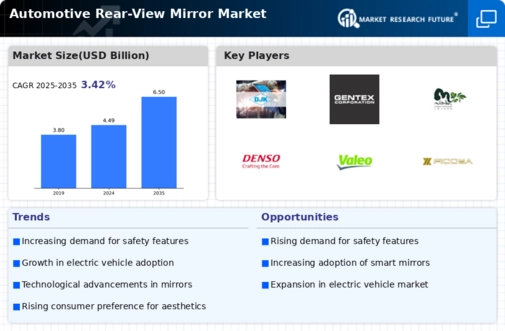
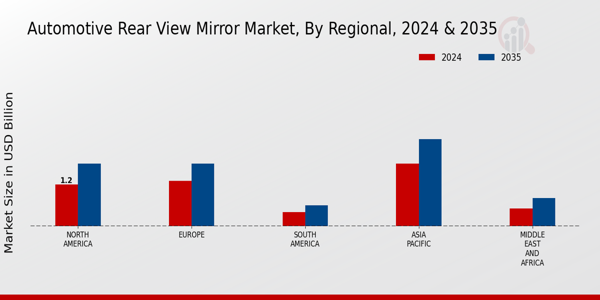

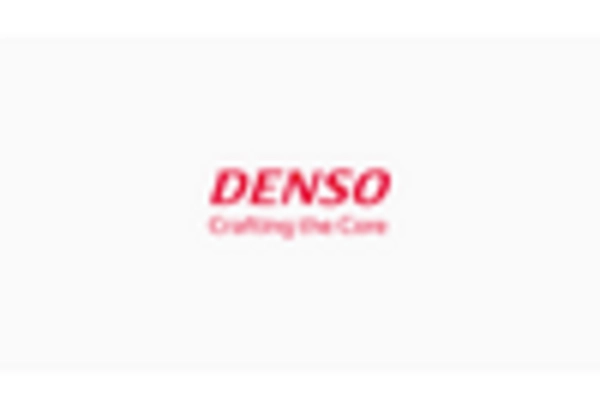
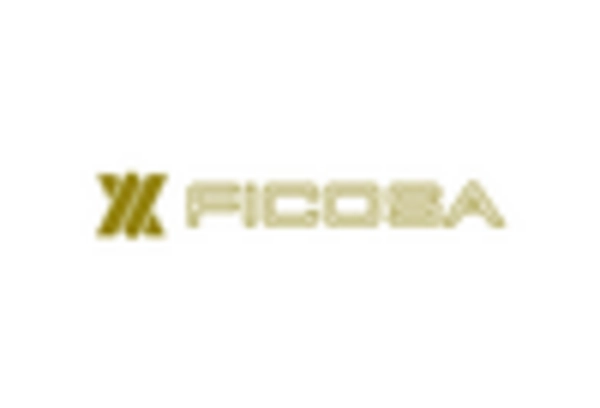
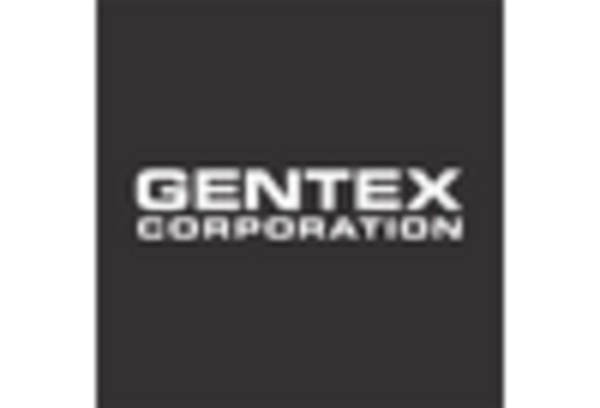



Leave a Comment